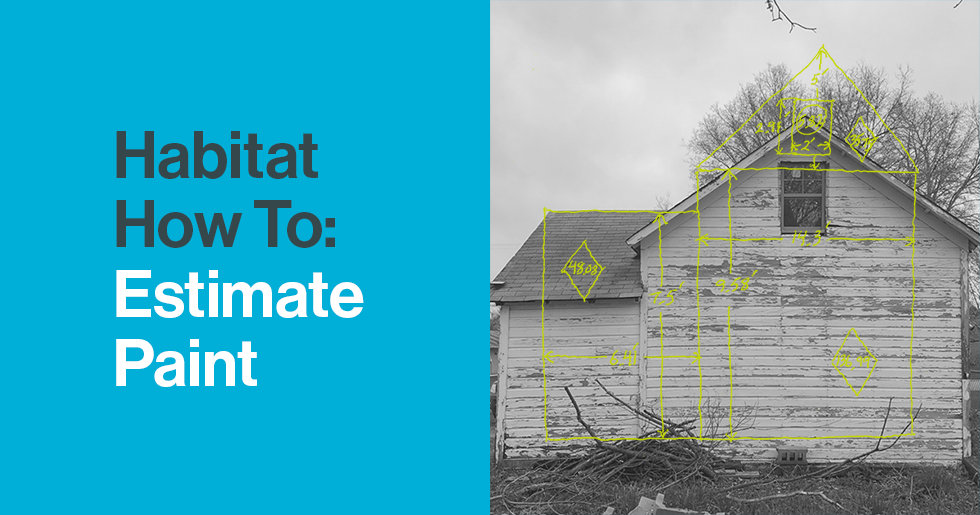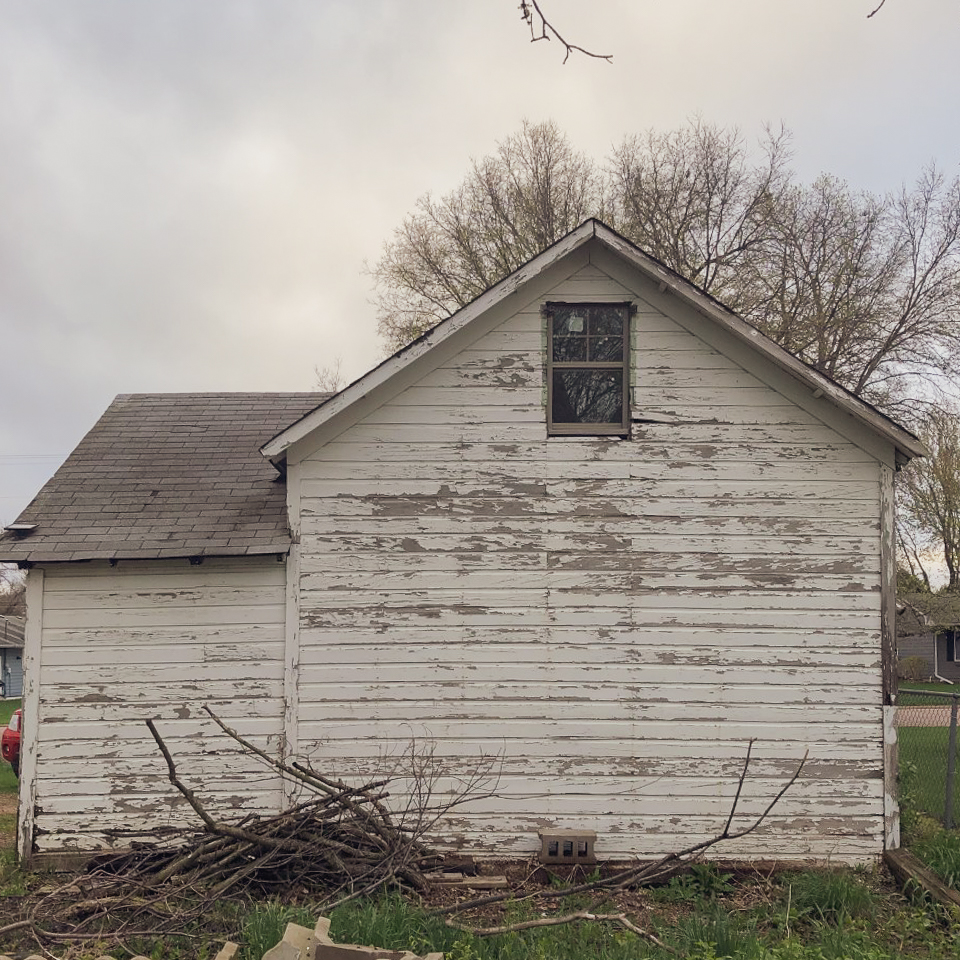Habitat How to: Estimate Paint for Your Project

Habitat’s Neighborhood Revitalization Program walks through the first step of any painting project: estimating
Warm weather brings out painting projects. After a winter spent indoors, it’s tempting to rush out and get started right away. Hold on. Before you head to the store, calculate how much paint you’ll need to purchase. An accurate estimate can save you money by preventing you from buying more paint than you need (and may have to dispose of safely). It might also prevent return trips to the store in the middle of your project. Follow these steps and you’ll have all the paint you need to finish the job.

Paint calculators can quickly determine coverage for a basic rectangular room. But what about irregular shapes? We asked Habitat’s Neighborhood Revitalization Coordinator, Lee Ferguson. Through NR, Lee helps local homeowners every year with exterior painting and makes an estimate for each project. He found an example with a slightly irregular shape (and a non-paintable window) to show us how.
Step 1: Find the square footage.
The square footage is the surface area of everything that needs paint. For a simple wall, the area is the width of the wall multiplied by its height. Since our example has an unusual shape, we first divided it into four smaller, easier-to-calculate chunks: the window, the gable (the triangle under the roof), and the left and right rectangles of the wall.

Start by measuring each section’s width and height:
- Window: 2.91’ by 2’
- Left rectangle: 6.41’ by 7.5’
- Right rectangle: 14.3’ by 9.58’
- For triangles like our gable, the width will be the longest side (called the base). Measure the height from the longest side to the opposite peak of the triangle at a right angle (90 degrees) from the base. 14.3’ by 5’

Next, use these measurements to find the area of each section. For rectangles, multiply the width by the height:
- Window: 2.91’ x 2’ = 5.82 square feet
- Left rectangle: 6.41’ x 7.5’ = 48.08 square feet
- Right rectangle: 14.3’ x 9.58’ = 136.99 square feet
For triangles, multiply its height by its base (or longest side). Then divide by 2.
- Gable: 5’ x 14.3’ ÷ 2 = 35.75 square feet
The total area will be the sum of all paintable regions (in our project, the left and right rectangles and the gable) minus any regions that won’t be painted (the window).
- Total of paintable regions: 48.08 + 136.99 + 35.75 = 220.82 square feet
- Minus non-painted regions: 220.82 – 5.82 = 215 square feet
Repeat this process for every wall or surface to find the area of an entire building or room.
Step 2: Convert square footage into gallons.
Now that we know how much surface needs paint, we can determine how many gallons we’ll need to cover it. One gallon of exterior paint can normally cover 275 to 300 square feet for one coat. Divide the total area by this conversion rate to find the total gallons needed for each coat:
- Total gallons for one coat: 215 square feet ÷ 275 square feet / gallon = 0.78 gallons
Now you know how many gallons you need for a coat of paint under standard conditions. (We recommend two coats of paint as a general rule of thumb.) You may need more paint, however, depending on what you’re painting:
- Consider the condition of the surface being painted. Old, dry or bare wood will soak up more paint, so will new drywall that’s never been painted before.
- Changing colors from an extreme dark to an extreme light (or vice versa) may require a second coat, or several.
In either of these conditions, we recommend rounding up by 10%:
- 0.78 gallons x 110% = 0.86 gallons
That’s it! In our example, 1 gallon should cover 1 coat, 2 gallons for 2. We’re ready to head to the store and find the perfect color.
Looking for an environmentally friendly paint for your next project? Check out the ReStore’s selection of Amazon Select Paints: available now for pickup!
Decimal Conversion Chart
| Inches | Feet |
| 1 | 0.08 |
| 2 | 0.16 |
| 3 | 0.25 |
| 4 | 0.33 |
| 5 | 0.41 |
| 6 | 0.50 |
| 7 | 0.58 |
| 8 | 0.66 |
| 9 | 0.75 |
| 10 | 0.83 |
| 11 | 0.91 |
| 12 | 1.00 |